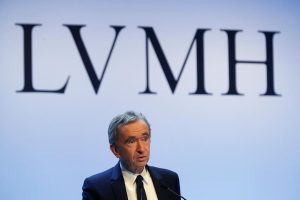
By Arasu Kannagi Basil and Saeed Azhar
(Reuters) -Wells Fargo’s profit beat expectations in the first quarter as the bank cut costs and set aside less money to cover potential loan losses, but its CEO warned on Friday that U.S. tariffs risk slowing economic growth.
The U.S. bank’s shares were down 1.5% in afternoon trade, partly recovering from a 3.6% dip earlier after it reduced expectations for its net interest income, the difference between what it earns and pays in interest.
“We currently expect our full-year 2025 net interest income to be in the low end of the range,” Chief Financial Officer Michael Santomassimo told analysts. “Still early in the year, and clearly we are entering a period with more volatility.”
Wells Fargo reiterated its prior forecast that annual interest income would rise between 1% and 3%.
U.S. banks entered 2025 with a bullish outlook, backed by a resilient economy, resurgent dealmaking and business-friendly pronouncements from the Trump administration.
The optimism has unraveled as President Donald Trump’s fluctuating tariff announcements stoked concerns about inflation that could tip the U.S. economy into recession.
“We support the administration’s willingness to look at barriers to fair trade for the United States, though there are certainly risks associated with such significant actions,” CEO Charlie Scharf said in a statement.
“We expect continued volatility and uncertainty and are prepared for a slower economic environment in 2025, but the actual outcome will be dependent on the results and timing of the policy changes.”
Shares have fallen 10% this year as of Thursday’s close.
“While the bar remains low, Wells Fargo is improving profitability and becoming a better-managed bank,” said James Shanahan, banking analyst at Edward Jones.
“We think this momentum will continue in 2025 with further cost-containment and strategic investments to bulk up its investment banking, trading and credit card products.”
Net interest income fell 6% to $11.5 billion in the quarter, missing estimates of $11.84 billion.
Executives have previously said NII would be relatively stable in the first half of 2025, with more growth in the second half.
Citigroup analysts said in a note the softer NII was due to weaker than expected loan growth and lower than expected commercial loan yields.
A slower start to the year on NII means a bigger challenge to get to the forecast range, Piper Sandler analysts said, adding that the path to those expectations requires more detail.


